INTRODUCTION
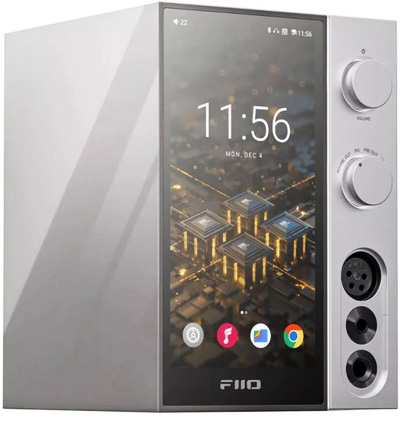
If there's one thing I’ve liked about the electronics industry as far back as i can remember it's that there's always something new and innovative getting released which will pique my interest whenever I least expect it. Take the R7 All-In-One Desktop Android HiFi Music Player by FIIO for example which took the market by storm last year both due to its performance and features (looks too). Yes, it wasn't perfect, but it was better than most similar devices in the market, even some which cost almost double what it retailed for. So, you can imagine my surprise when FiiO released the higher-end R9 model this year aimed towards audiophiles who wanted a lot more than what the already very good R7 was capable of.
FIIO was established in 2007 and has experience in researching and developing countless portable music products of different types, and sell FIIO-branded products through sales agents worldwide. The brand name FIIO is composed of Fi (fidelity from HiFi) and iO (number 1&0), representing the real feeling and convenient life that digital brings to life. Meanwhile, the Chinese “飞傲” is the transliteration of FIIO, indicating the positive and innovative spirit as thriving as spring. FIIO is focused on product quality, adheres strictly to ISO9001 standards in quality management and works hard to attain the lowest repair-related product returns rate.
Much like the R7 the brand new R9 is also based on the open Android v10.0 OS and was designed to cover a wide range of roles including being a DAC, DAP, fully balanced headphone amp and yes, even a music streamer. Inside its all-aluminum enclosure (which is very similar to that of the R7) FiiO has squeezed the Qualcomm Snapdragon 660 SoC (Kryo 260 CPU / Adreno 512 GPU / Hexagon 680 DSP), two 8-channel ESS Sabre ES9038PRO DACs in parallel connection (32-bit 8-channel with up to 140dB DNR and -122dB THD+N / support up to 32-bit 768kHz PCM, DSD256 via DoP, DSD512 and native DSD1024 / 24-bit 96kHz optical in, 24-bit 192kHz optical out / 24-bit 192kHz HDMI in/out), 8-channel THX AAA-788+ onboard headphone amplifier (also parallel connection - 7300mW power output), XU316-1024 XMOS 32-bit multicore microcontroller (16 real-time logical cores on 2 xCORE tiles - up to 2400MIPS in dual issue mode / up to 1200MFLOPS), 4GB LPDDR4 RAM, 64GB flash storage (roughly 46GB available), Qualcomm WCN3980 / QCC5125 Bluetooth v5.1 transmitter / receiver (supports aptX, aptX Adaptive, aptX HD, LHDC and LDAC audio codecs), OPA2211 op-amps (silicon-germanium CMOS manufacturing process), ELNA electrolytic capacitors and an 40W industrial-grade switching power supply (low noise, high efficiency - can also be powered by an external DC power supply). Just like with the R7 at the front of the R9 FiiO has placed an touch screen display which however this time is not only larger (6-inch / 5-inch) but also sports higher resolution (1080x2160p / 720x1280p), front RGB LED rings (again colors change depending on use and audio codec), RGB LED strip going through the front and top (same deal as the rings), SD card slot (up to 2TB capacity cards supported) and as for available connectors this time they've really pushed the envelope. To be more precise the FIIO R9 sports a 4-pin XLR port, 4.4mm balanced port and a 6.35mm port at the front and two stereo RCA outputs, two 3-pin XLR balanced output, coaxial in/out ports, optical S/PDIF in/out ports, HDMI in/out ports (ARC), RJ45 Ethernet port (100M), USB-A host port and a USB-C port (DP mode). Well, FiiO seems to have created a winner with their new R9 so let's get close and personal with it.
SPECIFICATIONS AND FEATURES

PACKAGING AND CONTENTS
FiiO uses a black and blue box to ship the R9 which and as usual at the front we only see the company and product names.
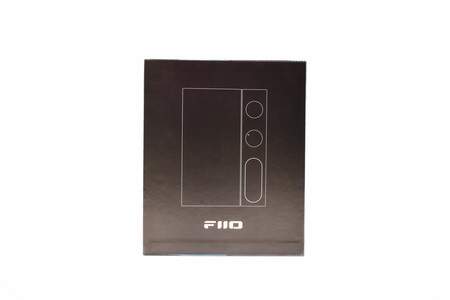
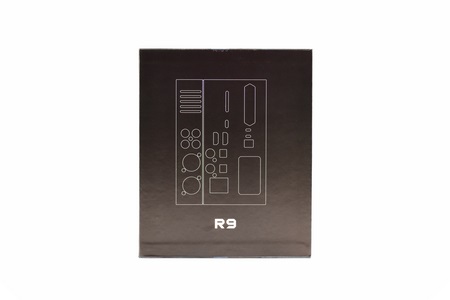 Product drawings/wireframes are placed on both sides of the box.
Product drawings/wireframes are placed on both sides of the box.
Various trademarks along with the product dimensions and contact information about FiiO are all printed at the rear.
The R9 is wrapped inside a synthetic bag and placed between two pieces of foam (the rest of the bundle is placed inside a cardboard box).
Aside the R9 and its power cable FiiO also packs the RM3 Bluetooth remote with user instructions, USB-A to USB-C cable, 6.3mm to 3.5mm gold plated adapter, two silicone bases, four pieces of adhesive tape, replaceable fuse, cleaning cloth, rubber cover, warranty information paper and the quick start guide.
THE R9
The 2271g heavy R9 is 160mm tall, 127mm long and 115mm wide.
I was honestly surprised to see that although twice as heavy the R9 is actually a tad smaller compared to the R7.
Although the 6-inch 1080x2160p LCD screen is good and very responsive I was hoping for a larger one.
Next to the LCD screen we find two control knobs (power on/off and audio levels and output).
Right under these knobs we find the 4-pin XLR port, 4.4mm balanced port and the 6.35mm port all placed behind a plastic cover.
Half of the top and bottom of the R9 and its left side all feature a mirror like finish (looks nice but it's a fingerprint magnet).
The right side is perforated and so when the R9 is turned on you can see part of the LED lights.
Moving at the rear we find the two stereo RCA ports, two 3-pin XLR balanced output, coaxial in/out ports, optical S/PDIF in/out ports, HDMI in/out ports (ARC), RJ45 Ethernet port (100M), SD card slot (SD to microSD adapter mounted already), USB-A host port, Wi-Fi Antenna, USB-C port (DP mode), AC/DC power switches, DC in, on/off switch and the power port.
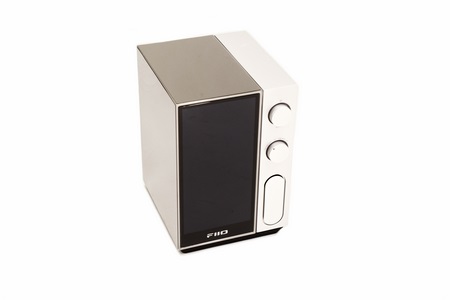
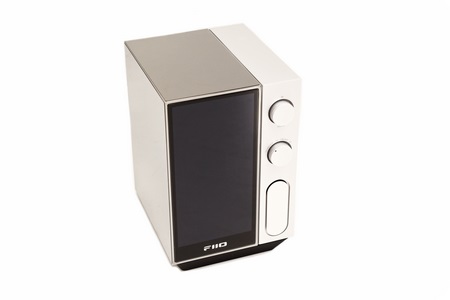 The two bundled silicon bases allow you to choose between flat and angled position.
The two bundled silicon bases allow you to choose between flat and angled position.
FiiO shipped the R7 without their RM3 Bluetooth remote and well it's good seeing it included with the R9.
R9 OS
Thanks to its 1080p resolution (1080x2160p) the 6-inch LCD screen looks slightly more crisp vibrant compared to the 5-inch of the R7.
At the time of my review firmware v1.0.4 was available so this is what i used.
So once again from the drop down menu you can set the screen brightness, enable/disable Wi-Fi and Bluetooth, change the mode, set the gain and output mode, enable in-vehicle mode, enable FiiO Roon and all to DSD functions, switch between dark/light themes, enable night light and rotate the screen.
There's also a graphical mode changer by pressing the power button if you don't want to use the drop-down function.
Inside the settings you'll find most of the features available in Android smartphones plus the more advanced audio and image settings.
Typically, it's the Pure Music mode what everyone will be using and as always is very easy to navigate.
As mentioned earlier the RGB LEDs change color depending on the audio codec so above you can see magenta for MQA, blue for MP3 (lossy audio) and yellow for FLAC Hi-Res (green for DSD and cyan for SQ). As with similar devices a short video is available online both on TikTok and YouTube.
CONCLUSION
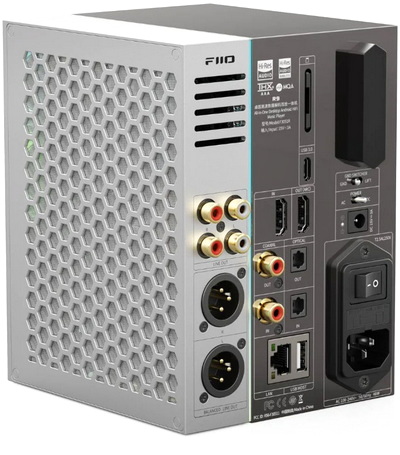
Even though the R9 was sent to the lab by FiiO roughly two months ago I ended up using it for less than 2 weeks due to some personal issues. The devices I used it with were the FT3 (32Ohm) and FT5 headphones by FiiO, the 109 Pro headphones by Meze (review soon) and the SP3 speakers again by FiiO. Well, it should be no surprise to anyone but the R9 is clearly many steps over the R7 and well, I was also expecting that right from the get-go. Audio quality regarding both mids and highs is improved across the board from detail, clarity, separation, resolution and of course soundstage and as for bass levels well, I seriously doubt you can find many other models (portable and desktop) that can compete with it. Yes, there are probably professional grade players that cost a lot more which could possibly do better in terms of accurate instrument reproduction (at least more among the lines of what professionals want) but again I was more than happy in that area too. As for features the plethora of connectors is nothing short of impressive and let’s not forget that this time over FiiO has equipped the R9 with HDMI ports meaning you can also connect it with your TV or 4k media player and in turn to a set of active speakers like the SP3 I used (or a soundbar). The ability to choose an external power supply unit to further improve audio performance may not be something I’d personally do but I imagine there are very demanding audiophiles out there who would and just having that option is a plus. There are a couple of things I didn’t like about the R9 however, the lack of interior storage space (sufficient one) and the 6-inch LCD screen (not large enough). For such a price I don’t think it would have been hard for FiiO to give the R9 enough storage space for most uses. FLAC HR and MQA audio files are not small and so less than 46GB available is nowhere near enough for such use, not if your audio library is large (even more so if you install apps in it). Yes, the SD card slot allows you to do that but again, even 512GB of internal storage space would be a very convenient feature for many people. As for the 6-inch screen when the R7 has a 5-inch one I do think FiiO should had added a screen of at least 2-inches larger. I do realize that they might have done so to produce a compact model, but I personally think that it would look a lot better if the R9 seemed a far more premium solution compared to the R7 (we are talking about double the price after all). One last thing I need to point out is that even though the R9 comes wearing Android OS 10 (even with firmware version 1.0.4) FiiO has stated they will give it Android OS 12 with a future firmware update so that too is good news (if it happens of course). Last thing i need to clarify is that FiiO allows you to control the R9 from your smartphone with their Cast app. May not be quite the same as some more complete apps since it basically mirrors the screen of the R9 onto your smartphone but it gets the job done (which is why i updated the pros and cons of this review).
The R9 already counts 5 months in the global market and retails for USD1499 inside the USA (Amazon.com) and for around 1490Euros inside the EU so again, it’s not what I’d call affordable. At the end of the day the main question is whether or not it’s worth spending twice as much for an R9 compared to an R7 and the answer is yes, if you can afford it and need the boost in audio quality and of course all the extra features. Don’t forget that the source is only half of the equation so if you can’t pair the R9 with let’s say at least the FiiO FT5 or the Meze 109 Pro (even the SP3 didn’t see quite enough for the R9 which is why my guess is that FiiO is already working on a new pair of speakers) then I don’t see much of a reason. With that out of the way however I can’t deny that the R9 is the best DAC/Amp/Streamer to arrive in the lab (to date) and for that the Platinum Award is in order.

PROS
- Near Excellent Build Quality
- Impressive Audio Performance
- Supported Bluetooth Codecs (SBC/AAC/aptX/aptX HD/LDAC/LHDC)
- 5.99” Touchscreen (1080x2160p)
- Octa Core Qualcomm Snapdragon 660 14nm SoC
- Dual 8 Channel ESS Sabre ES9038PRO DACs
- 8 Channel THX AAA-788+ Onboard Headphone Amplifier
- XU316-1024 XMOS 32 Bit Multicore Microcontroller
- 4GB LPDDR4 RAM
- Available Inputs / Outputs (4 Pin XLR/4.4mm Balanced/6.35mm/Dual 3 Pin XLR Balanced Ports/RCA/Optical/Coaxial/HDMI ARC/RJ45/USB A/USB C)
- External DC Power Supply Support
- Bluetooth 5.1 & WiFi 2.4G/5G
- SD Card Slot (Up To 2TB)
- 64GB Onboard Storage (46GB Available)
- Supported Audio Formats (DSD/ISO/DSF/DFF/DST/DXD/APE/Apple Lossless/AIFF/FLAC/WAV/WMA/MP3/OGG/AAC)
- Open Android v10.0 OS (Future V12 Update?)
- ARGB LED Rings & Strip
- RM3 Bluetooth Remote
- Flat & Angled Rubber Bases
- Product Support
CONS
- Price (For Some)
- Almost Identical To The R7 (Design / LCD)

 O-Sense
O-Sense





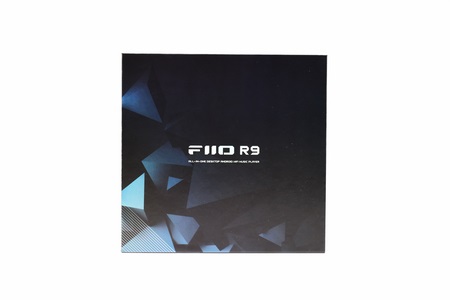
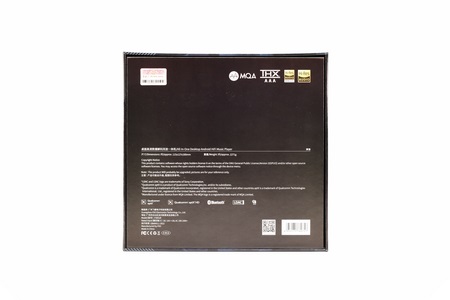
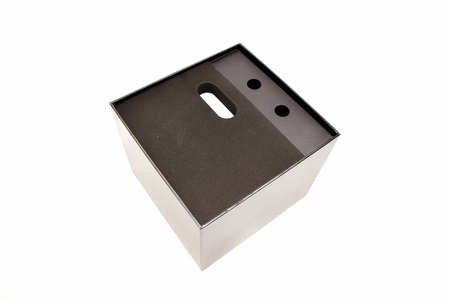
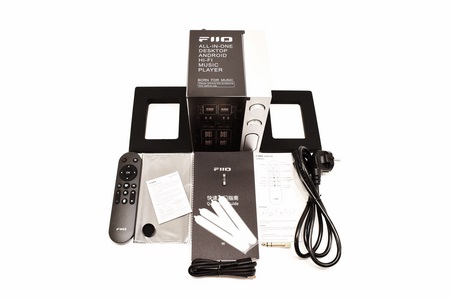
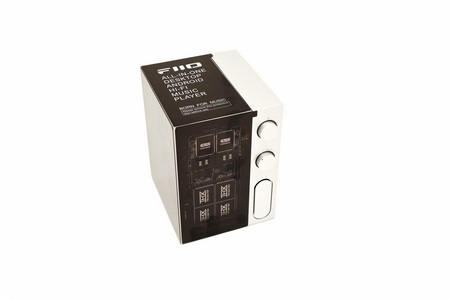
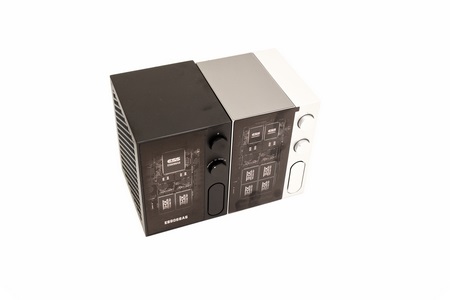
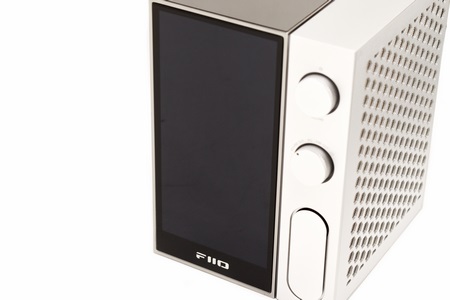
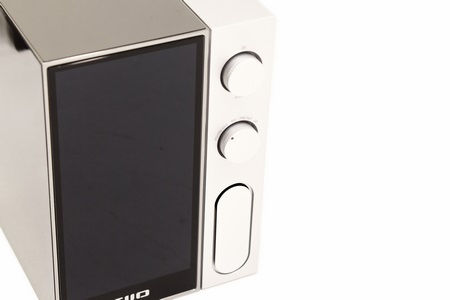
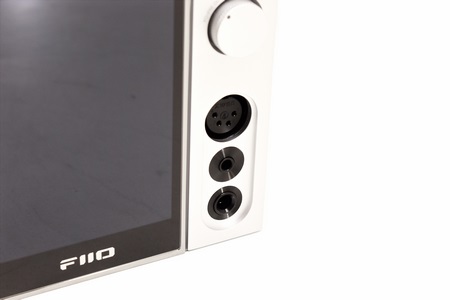
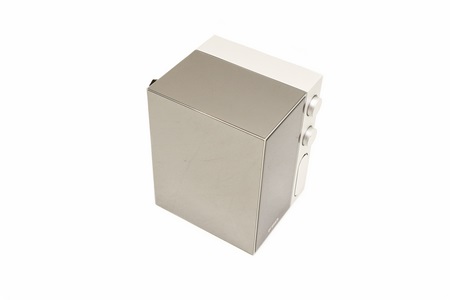
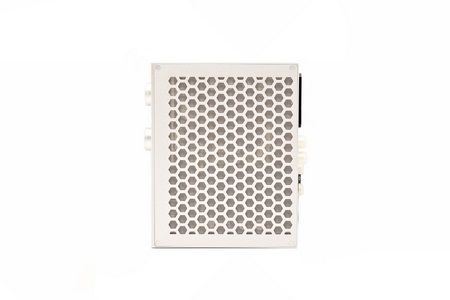
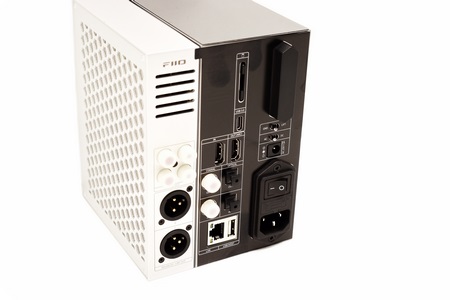
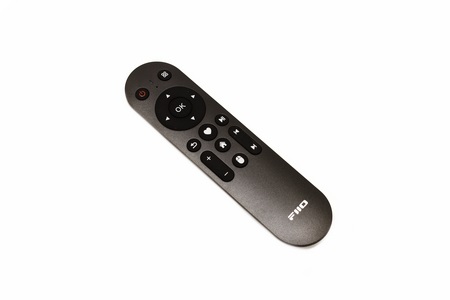
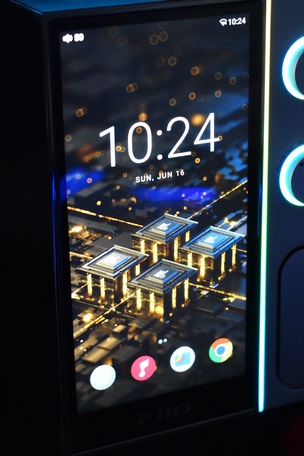
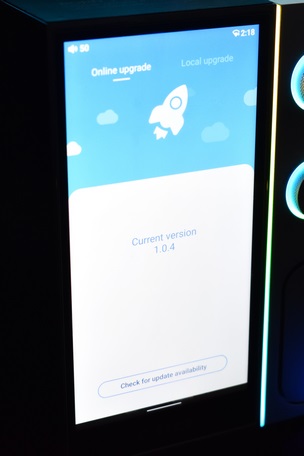
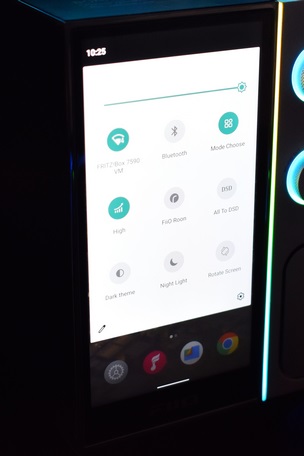
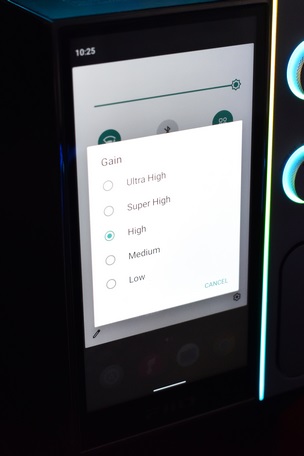

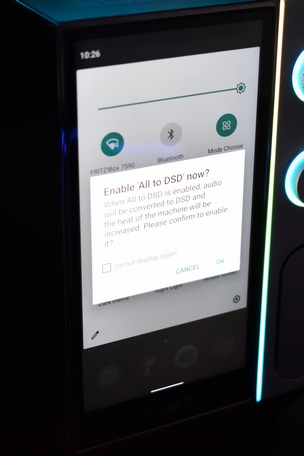
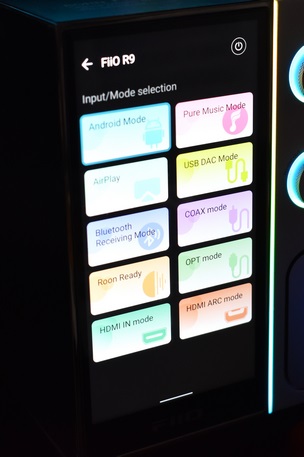
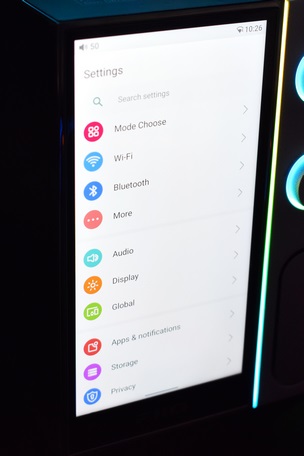
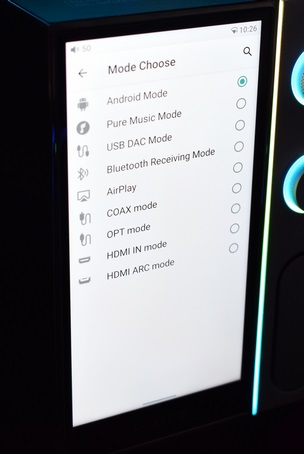
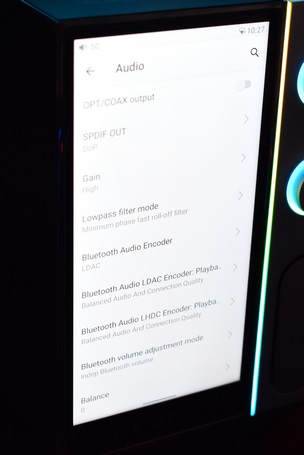
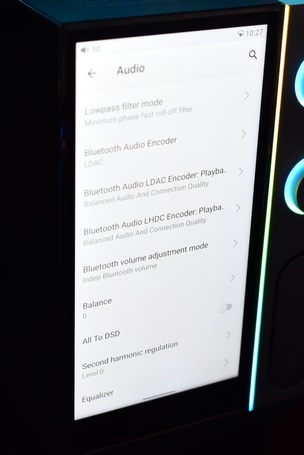
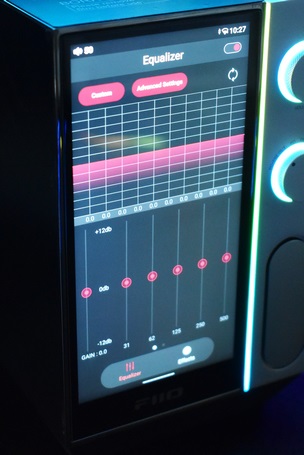
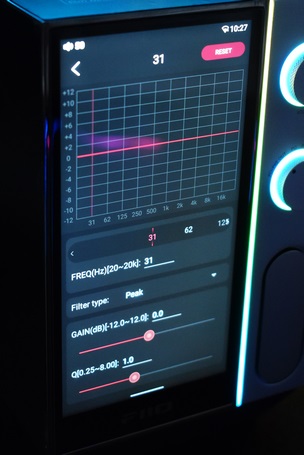
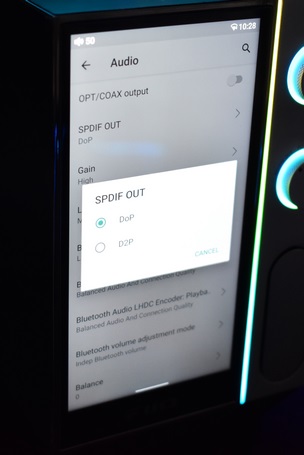
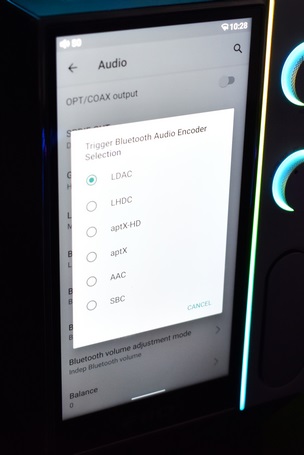
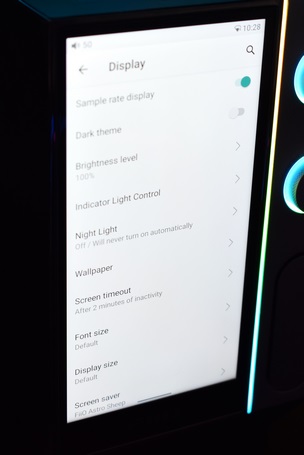
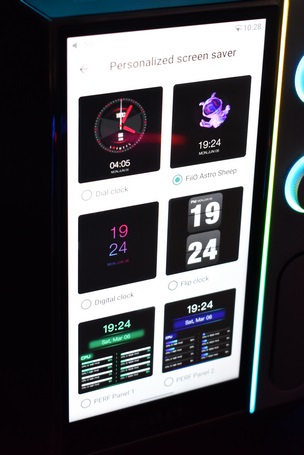
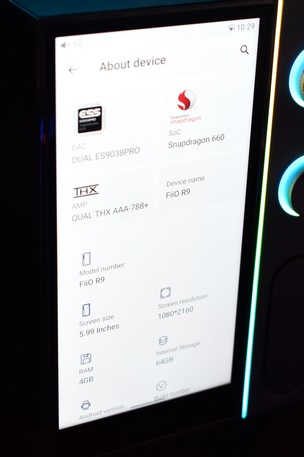
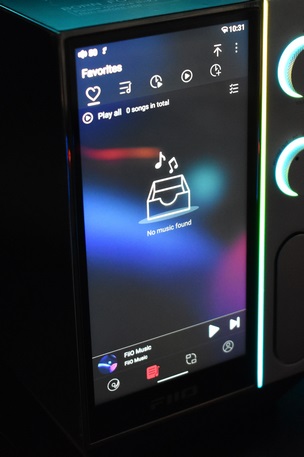
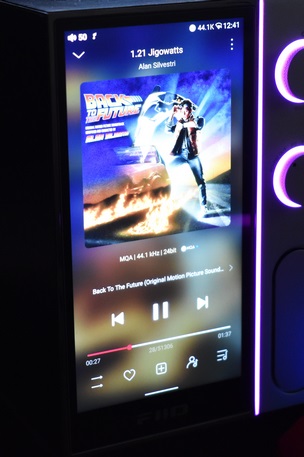
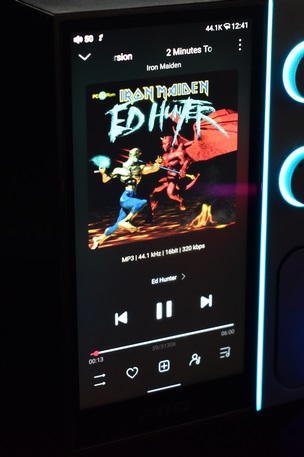
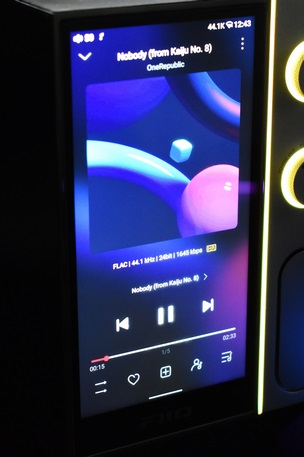


.png)

